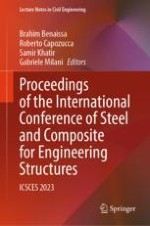2024 | OriginalPaper | Buchkapitel
Enhanced Computational Modelling of the Fracturing Behavior in CRM Single Lap Shear Tests
verfasst von : Rossana Dimitri, Martina Rinaldi, Marco Trullo, Francesco Tornabene
Erschienen in: Proceedings of the International Conference of Steel and Composite for Engineering Structures
Verlag: Springer Nature Switzerland
Aktivieren Sie unsere intelligente Suche, um passende Fachinhalte oder Patente zu finden.
Wählen Sie Textabschnitte aus um mit Künstlicher Intelligenz passenden Patente zu finden. powered by
Markieren Sie Textabschnitte, um KI-gestützt weitere passende Inhalte zu finden. powered by
